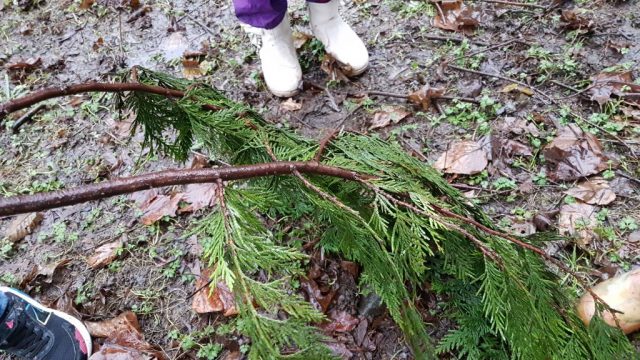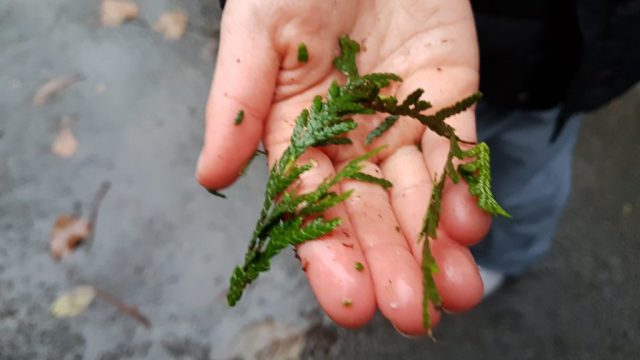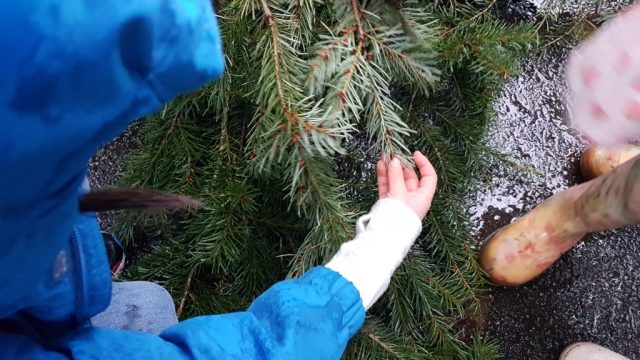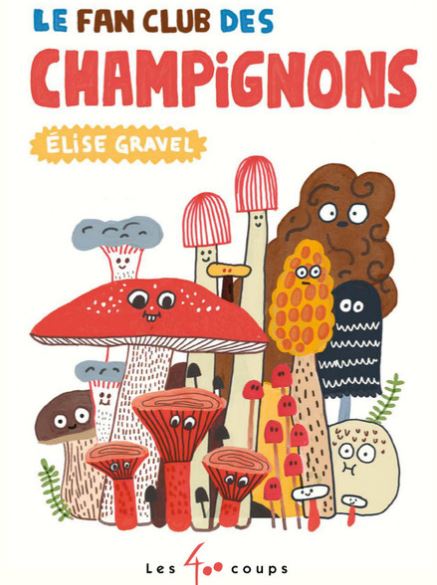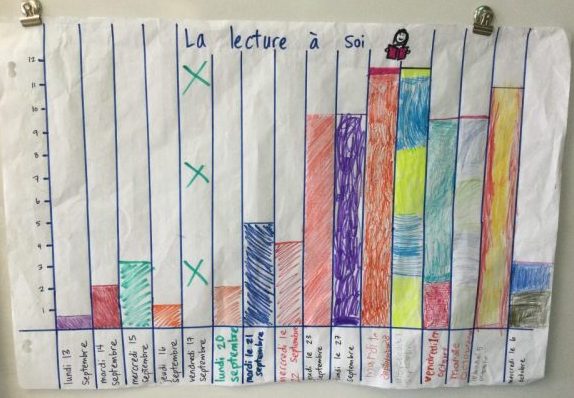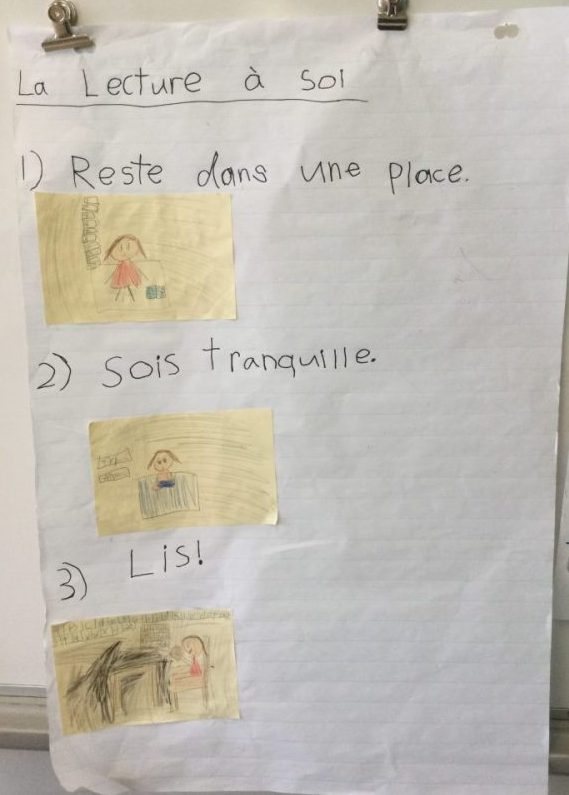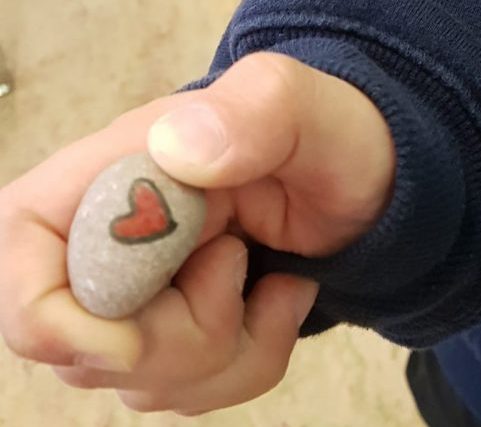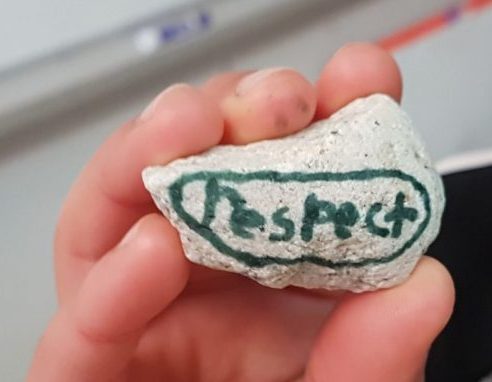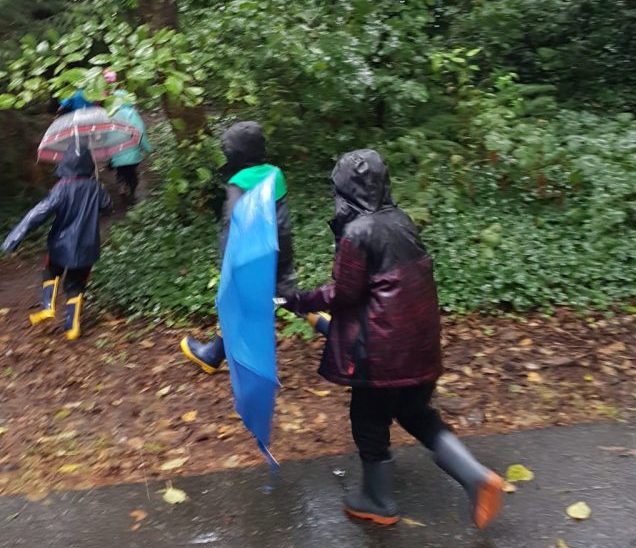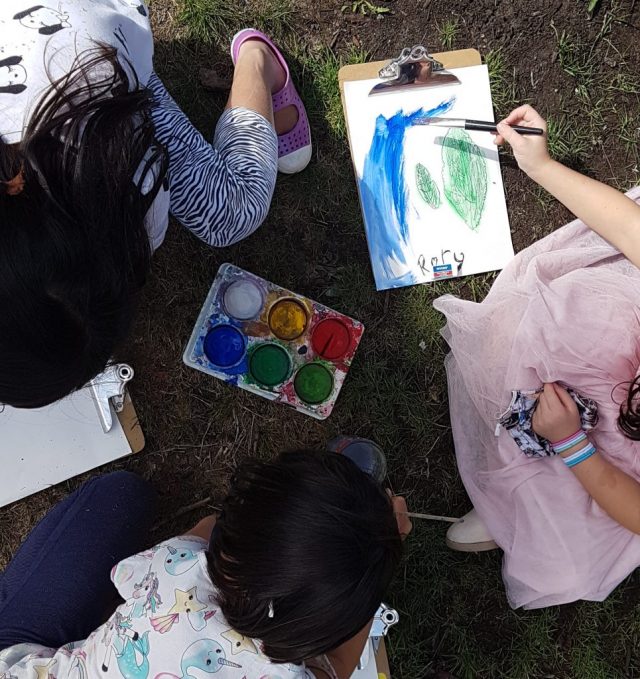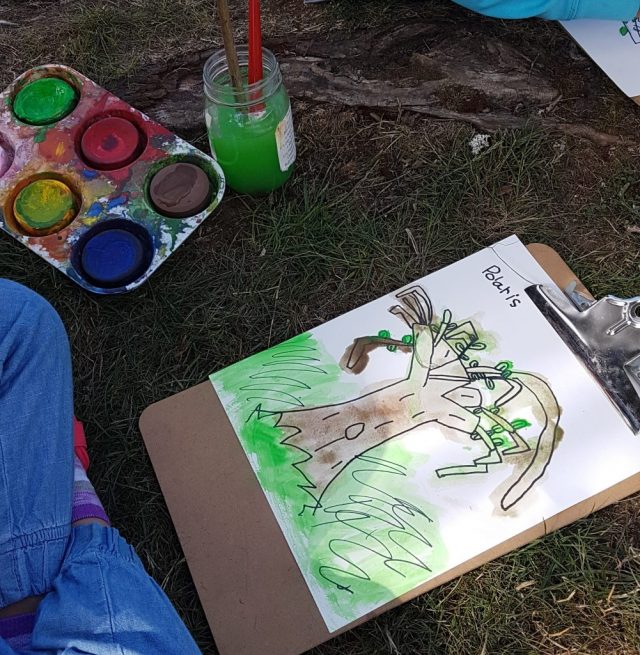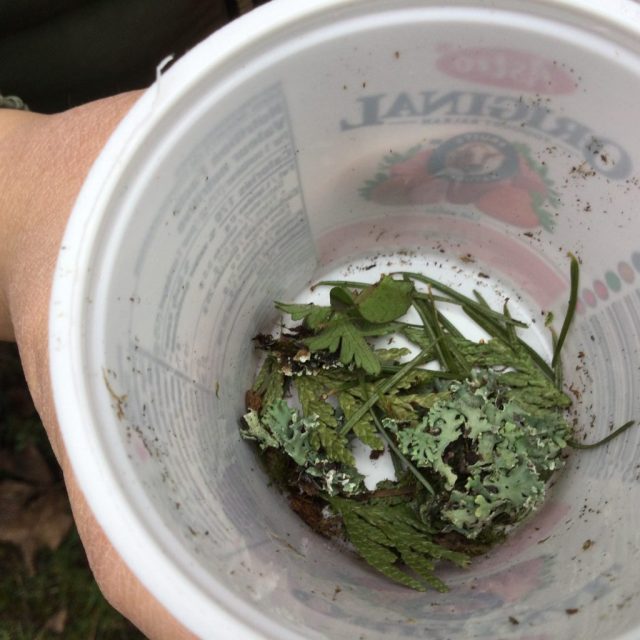 Students were asked to create a forest ‘perfume’. We discovered that le cèdre was the most fragrant. Other plants were used, such as clover, lichen, or fir needles. Some even threw in pinecones and dead leaves for an especially earthy smell!
Students were asked to create a forest ‘perfume’. We discovered that le cèdre was the most fragrant. Other plants were used, such as clover, lichen, or fir needles. Some even threw in pinecones and dead leaves for an especially earthy smell!
As always, we only collected plants from the forest floor. We’re aiming to not harm living plants. We’re also aiming to not disturb our local ecosystem.

